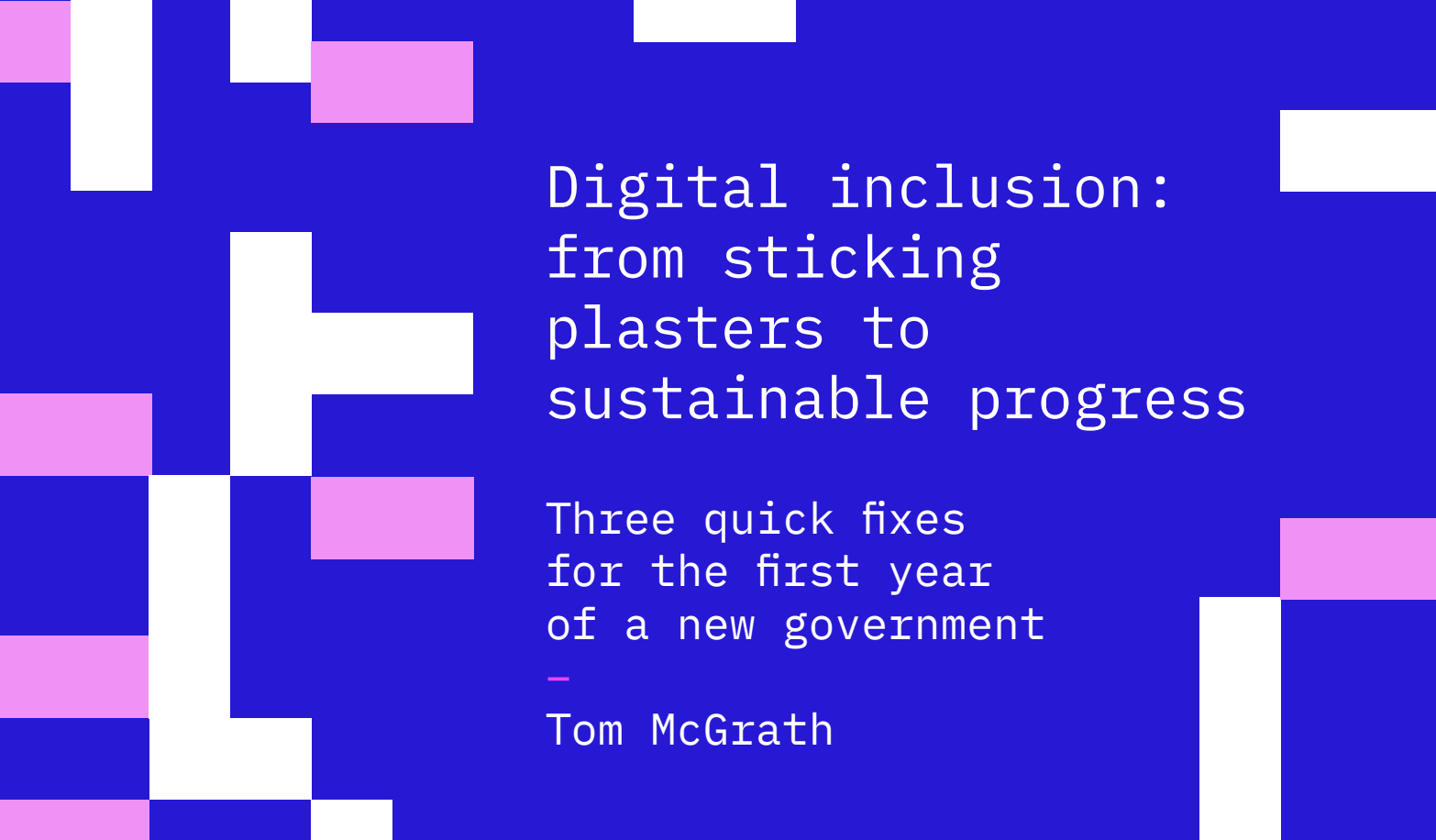Digital Inclusion for 2024 and Beyond
Detail from front cover of Digital inclusion: from sticking plasters to sustainable progress report
Whenever the UK General Election ends up taking place, 2024 is inevitably going to be a year in which civil society, policymakers and politicians are looking for new solutions to our social challenges.
How we tackle digital exclusion should be no exception.
Digital inclusion charities, community organisations and local authorities do valuable and impactful work providing training, digital devices and digital access to people who are digitally excluded. But too often that work can’t get to the root causes of exclusion. It’s often under-funded, and overly reliant on volunteers and other services and infrastructures that are facing their own challenges, such as local libraries.
One reason for this is the origins of current digital exclusion policy in priorities and evidence from the early 2010s. It has not kept pace with the changing world we live in, nor the advances in technology, nor has it sufficiently interrogated the structural underpinnings of digital exclusion. Rather than address fundamental challenges such as the lack of affordability in the broadband market, much of the work to tackle digital exclusion is based on a charitable model of donated devices and time-limited access to free data. This mirrors the proliferation of foodbanks; a sign that something fundamental is broken rather than a cause to be celebrated.
As part of our Community Connectivity project we are embarking on a series of publications and discussions throughout the Spring in which we introduce new perspectives to the digital inclusion policy debate, explore how to make digital inclusion policy fit for the AI age, and address some of the root causes of digital exclusion.
First in the series is a report by our Policy Researcher Tom McGrath, looking at three relatively simple and inexpensive ways in which digital inclusion policy can be improved in the short term.
The way we use the internet in 2024 is not the same as it was in 2014. Rather than logging on to complete specific tasks, many of us are now connected at all times of the day and night, and virtually all aspects of our lives can be mediated through the internet. But the official definition of digital inclusion has not kept pace: the Office for National Statistics’ classifies an internet user as anyone who has accessed the internet in the past three months.
The skills we need to navigate the internet and the wider technology landscape have also changed dramatically over the past decade. The extent to which the online world is woven into our lives means ‘digital skills’ are not a standalone skillset, but a much more personalised and nuanced set of tools, knowledge and hands-on experience.
This interwoven nature highlights the central importance of digital access to our lives; in many ways it is no different to other essential utilities such as electricity and water. However it does not benefit from the same consumer protections, something we think should change.
Tom explores these three challenges and potential solutions in his report.
If you’d like to get involved with this programme of work, please get in touch: you can email hello@promisingtrouble.net, putting Community Connectivity in the subject line, and sign up to our newsletter to hear the latest thinking.
Credits:
Author: Anna Dent
Researcher: Tom McGrath


